When you’re a building that’s twenty‑something years old, a facelift can save you from the wrecking ball. Thomas Lane reports on how British Land increased the net area of One Triton Square by 57% but still saved 40,000 tonnes of carbon by opting for refurbishment over new build
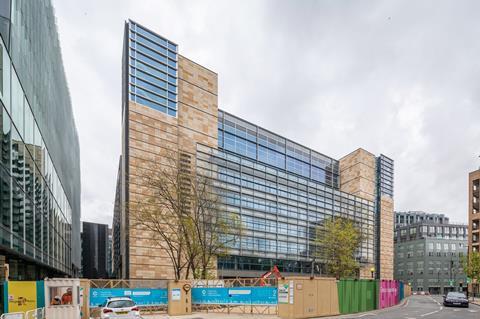

As a rule, anyone fully refurbishing a 20-year-old office building will take the opportunity to bring it bang up to date by clothing it in a brand-new skin. So it was a surprise to arrive at One Triton Square, British Land’s latest completed project, and be greeted by a building that looks very much its age. Designed by Arup Associates and completed in 1998, this building features late post-modern touches such as large areas of colourful, variegated limestone cladding, random angular shapes and a projecting glass facade.
The reason why the building looks its age is because this is a refurbishment with a difference. The team responsible for this job – British Land, Arup and Lendlease – had one goal: to make the project as low carbon as possible. Indeed, the team named themselves Team Triton after the successful British cycling outfit Team Sky whose former coach, Dave Brailsford, developed the concept of marginal gains, whereby lots of tiny improvements in multiple areas add up to a big overall advantage. One of the bigger carbon reduction gains, and something that is rarely done, was to carefully dismantle the facade, clean it, and put it back – which is one reason why the building looks its age.
Extra space has been created by adding three storeys, which are stepped back from those lower down. The French limestone-clad cores, which are located on each corner of the building, have been extended upwards to service the new floors, with the new sections clad in the same French limestone. This has been so artfully done it is almost impossible to tell where the old ends and the new begins.
The building was originally developed by British Land as part of its Regent’s Place campus for JP Morgan in 1998. British Land knew this lease was expiring in 2018, so started thinking about the building’s future back in 2015. Tim Downes, development director at British Land, says the building was “relatively over-specified” for its time.
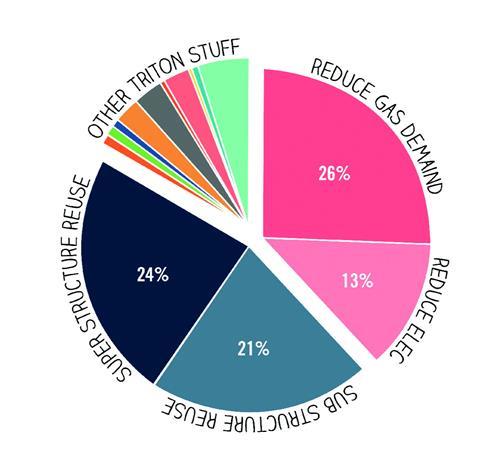
“We quickly realised it was inherently a very good-quality building with the potential to increase the size of it and the density of space to suit an occupier within our existing campus that we knew had a need for more space,” he explains. “We knew it wasn’t necessary to demolish and start again – and why should we when the building was only 20 years old?”
Opting for refurbishment over new build had several advantages, as it saved time and money but also crucially carbon. Downes admits that sustainability was not a key consideration during the early stages but this changed as the project evolved. “As we gained momentum working through the design process, we realised there was a fantastic sustainability story and that became the main driver for how the project developed,” he says. Downes adds that Arup, which was engaged to do the architectural, structural and MEP design, introduced the idea of marginal gains to the project. Lendlease was brought in early on to advise on the construction side; Downes says applying the concept of marginal gains to this project was possible only because of the collaborative approach between developer, designer and contractor. The team assessed the embodied and operational carbon footprint of the project over the 20-year lease period and referenced this against a business-as-usual scenario to establish the carbon savings.
The new buildings that have been developed around One Triton Square since it was built are 10 to 11 storeys high, making the case to extend the seven-storey One Triton upwards a no‑brainer. The inherent strength of the concrete frame meant three extra floors could be added without significant structural interventions. The building was originally designed with a big trading floor at first-floor level and featured London’s biggest enclosed atrium at 36m across, leaving a floorplate just 18m wide. The atrium has been reduced to 18m across, creating yet more space. The plant areas in the single-storey basement and on the roof did not need to be increased in size to service the larger building due to efficiency advances in MEP systems. The result was an increase in net area of 57% to a total of 340,000ft².
As we gained momentum working through the design process, we realised there was a fantastic sustainability story and that became the main driver for how the project developed
Tim Downes, British Land
Although the frame was fundamentally good, some strategic strengthening was needed to support the weight of the additional floors. Rather than add new columns that would have taken up valuable space, the existing columns were strengthened. In all, 175 columns were strengthened by increasing their diameter from 270mm to 800mm through encasing the existing column with new rebar and shuttering and pumping in a C80 grout at the base. The grout has the benefit of giving an excellent surface finish. In the basement and elsewhere on the building, carbon fibre wrap was used to strengthen 27 columns. This increases the axial strength of the column by 40% for a diameter increase of just 8mm.
One of the more unusual carbon savings on this project was reusing the facade. “Typically, on a major refurbishment like this which is stripped back to the frame, the first port of call is to commission a brand-new facade,” says Downes. “As we started looking more closely at the facade and how it was originally put together, we established it was able to be dismantled rather than destroyed as part of the removal process.”
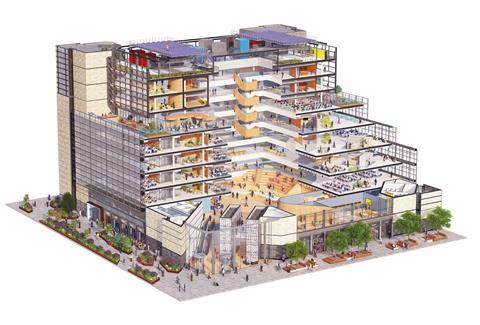
The facade was an early double-skinned unitised system originally manufactured by Scheldebouw, now part of the Permasteelisa Group. Team Triton approached Scheldebouw to see if the facade could be reused and were told it could. The facade had been dry assembled rather than being held together by glues and mastics, which would have made reuse very difficult. The process was also simplified as Scheldebouw had records of the original design.
The first job was to dismantle the facade which consisted of 3,500m² of panels, equivalent to a dozen tennis courts. “It was really challenging taking it down as we had to be careful not to damage it or lose any components,” explains Lendlease’s project director, Chris Carragher. “There were 120,000 to 130,000 pieces, some of which had to labelled.” Carragher says Lendlease had to carefully plan the sequencing of the job to accommodate the facade refurbishment. “We realised it wasn’t a simple case of taking it off and putting it back again.” He explains that the last component to be taken off was the first to be put back, which meant all the components had to be refurbished before work could start on reinstatement. Disassembly work started in April 2018 and reassembly did not begin until the summer of 2019. This was built into the programme so work on strengthening the existing structure and new steelwork for the atrium infill and additional three storeys could be done while the facade was being refurbished.

The original plan was to ship all the facade components over to Germany for refurbishment, which added up to 25,000 transport miles. “We had a conversation with Lendlease, who decided it could be done in the UK,” explains Downes. “We set up a pop-up factory in Essex in conjunction with Lendlease and the facade manufacturer and refurbished all of the components there. Instantly you have got a huge transportation saving, and there was a monetary saving as well. It also made life a bit easier as we were in the middle of Brexit.”
> Also read: Lessons on net zero offices from British Lands’ 100 Liverpool Street
Gartner, another part of the Permasteelisa Group, refurbished the facade. This was stripped down and external facing sections re‑anodised. The glass to the single-glazed outer skin was reused and the double-glazed units on the inner skin replaced. Double-glazed units have a limited life as the seals eventually fail. Advances in glass coating technology means the new units will be more thermally efficient. The reinstated facade has the benefit of a full 25-year guarantee because the work was done by the original manufacturer. “This was very important to our incoming customer who took the lease of the building,” says Downes.
In the bid to maximise the carbon savings from marginal gains, the four cores on the corner of the building were left unheated. The new occupier, advertising agency Dentsu, will install internal stairs during the fit-out.
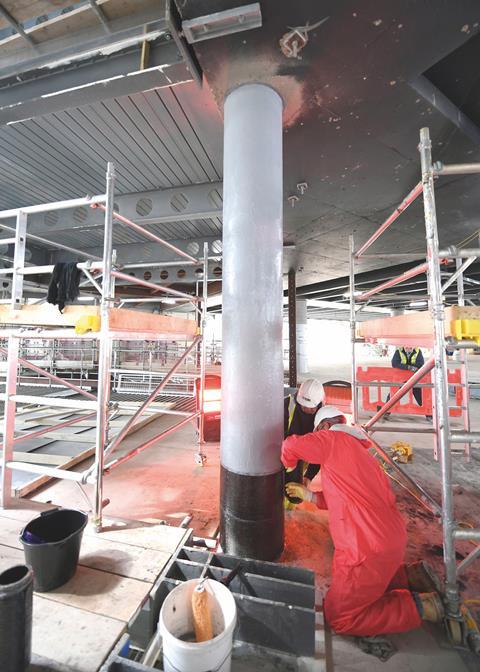
The building features all new services, with the original plant being sold where it could be reused or recycled. The original system was designed to service the high loads of a trading floor and was an all-air system. This took up a lot of space because big air-handling units and large ducts are needed to move and distribute the air. Because the area dedicated to plant has not increased, Arup has opted for a more efficient and less space-hungry chilled water system. Hot and chilled water will be connected to fan coil units during the fit-out phase. The building benefits from all LED lighting and fans that remain highly efficient even on low settings so the building services will run efficiently when turned down at night and during holidays. The building has been fitted with gas boilers as there was not enough room for heat pumps, although there is a heat pump that recovers waste heat from the chillers to heat the domestic hot water. The services have been designed so that these can be connected to a district heating system in the future.
All these improvements have helped the building bag a BREEAM Outstanding rating for a cost uplift of just 0.3%, compared with an industry norm of 5%. The building is more energy efficient than a standard commercial building, saving 15,000 tonnes of carbon over 20 years. The refurbishment saved 25,000 tonnes of carbon compared with a new build, adding up to a total carbon saving of 40,000 tonnes over the 20-year life of the building. To put that into context, the upfront carbon of this project works out at 450kg CO2/m²; by comparison the Cheesegrater was 900-1,100kg CO2/m² and British Land is targeting 550kg CO2/m² at its 2 Finsbury Square scheme.
This is all very worthy, but does it mean the occupiers are going to be stuck with the limitations of a 20-year-old relic? Nick Jackson, the director of architecture at Arup, says not. “This is a completely different building from the one we started with,” he explains. “It will have a very different character and it engages with the street and urban context much more. It is a new piece of architecture; there is an old building inside there and there are elements of the elevation that are recognisable, but the whole ground-floor relationship to the surrounding public realm is completely different: it has opened up the ground floor; there is more retail in it; the entrance is transformed from a recessive, dark space into a much more public, welcoming experience.” Once the extensive landscaping is finished and the building is operational, the renewed One Triton Square will be the new benchmark for the industry to beat.
Project team
Client British Land
Architect / structural and MEP engineer Arup
Cost consultant Aecom
Project manager M3
Planning consultant DP9
Contractor Lendlease
Facade Gartner












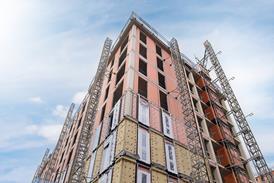


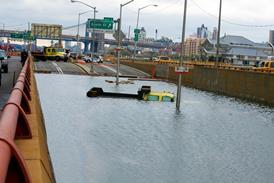
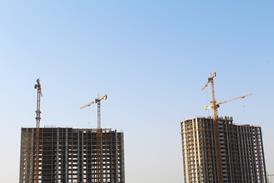










No comments yet